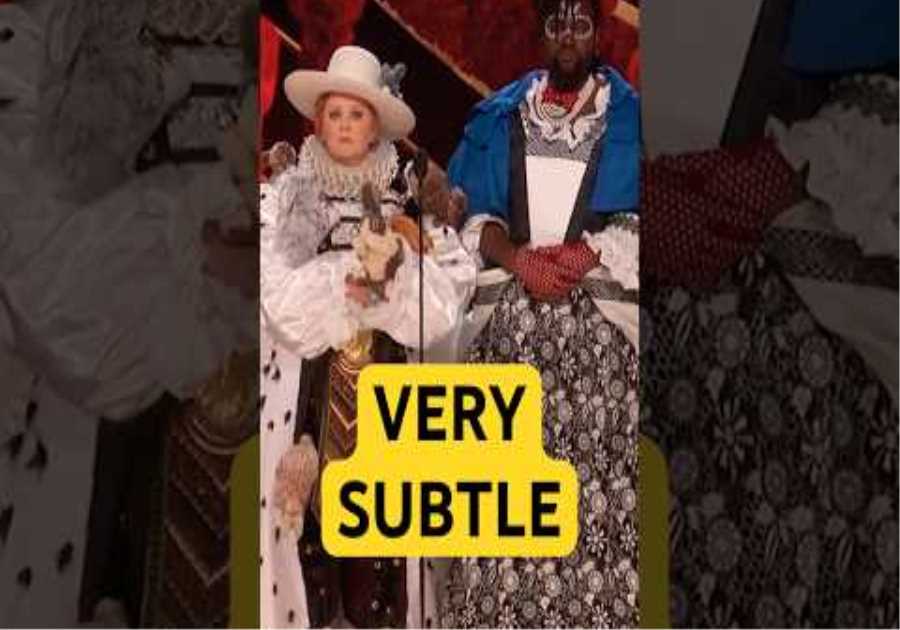“How the MCU Was Made” is a series of deep-dive articles that delve into the ins and outs of the development history, production, and release of all the Marvel Studios movies
When Spider-Man: Homecoming hit theaters in 2017, it faced an uphill battle. Sure, the more serious MCU fans knew how exciting it was to finally see Spider-Man as crafted by the fine folks at Marvel Studios, but general audiences saw this as yet another reboot of the famous webslinger just five years after the last one. Luckily, critics raved and word of mouth won out, leading Homecoming to the best box office of the Spider-Man franchise in years. Going into the sequel, Spider-Man: Far from Home, audiences were now onboard with this new take on the character and ready to see where things went next, so the filmmakers didn’t have to worry about reintroducing this iteration of Peter Parker once more. One minor adjustment though: the film would also need to serve as the postscript to the biggest film of all time, Avengers: Endgame. This is the story of how Spider-Man: Far from Home was made.
The initial deal that brought Sony Pictures and Marvel Studios together for Spider-Man: Homecoming included at least one additional standalone movie, and given the success of Homecoming, all involved moved forward enthusiastically on a sequel. During the press tour for Homecoming, Marvel Studios president Kevin Feige revealed that they had discussed the idea of each new Spider-Man movie covering a different school year for Peter Parker, not unlike the Harry Potter series. With that understood, we knew at the very least Far from Home would explore Parker’s junior year of high school.
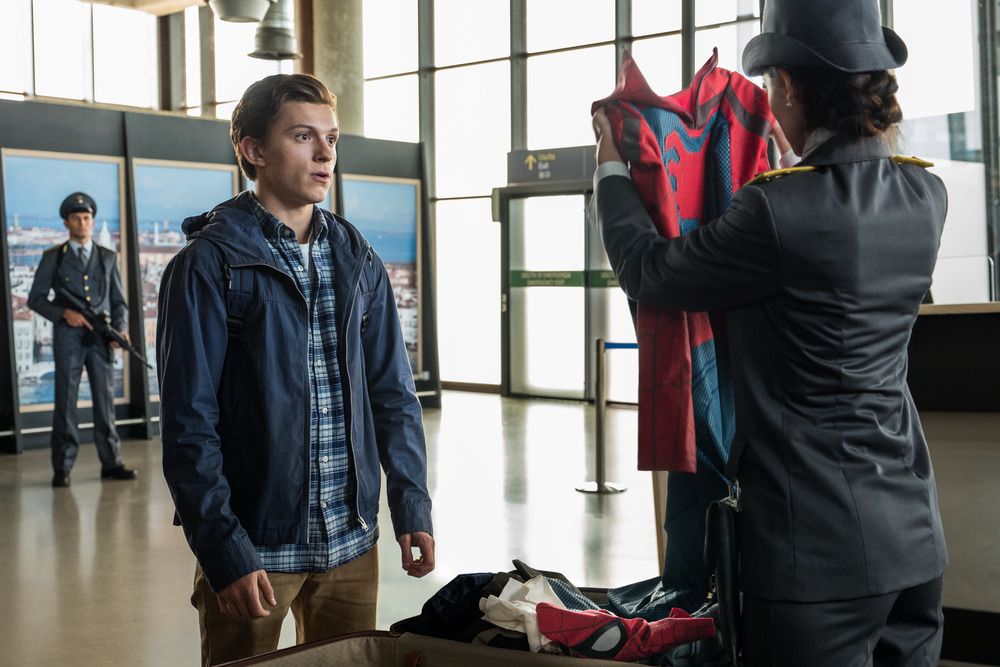
However, Sony and Marvel butted heads early on when Sony was keen on releasing Far from Home in July 2019, whereas Marvel would have preferred to put the film’s release off a bit longer. Avengers: Endgame—a culminating event for the Marvel Cinematic Universe which would mark the farewell for a number of characters—was due to be released in April 2019, and Marvel wanted to keep all the secrets under wraps. But with Far from Home releasing in July, Sony’s marketing campaign would have to begin before Endgame hit theaters, meaning they’d have to show footage from what happens after Endgame—much to Marvel’s chagrin. But more on that later.
By the end of 2017, director Jon Watts and writers Chris McKenna and Erik Sommers had been enlisted to return and spearhead the sequel. Sommers shed some light on their working relationship at Marvel, revealing that the studio handed over some story ideas before they got to work on the script:
“Typically, when we start on a Marvel movie—and we’ve done three now—they’ll have a document that they have put together with ideas for the movie based on source material, their own internal conversations, things from the overall MCU that might be pulled in, things that need to be addressed based on other movies. That’s always a really useful starting point, and we’ll all look at that document and that’ll be sort of a source for conversations. And then we’ll take it from there, but things can change a lot. It’s just a set of ideas to sort of get the whole conversation started.”

Specifically for Far from Home, Marvel had two major points that needed to be addressed as it related to the events of Avengers: Endgame: the Blip and Tony Stark’s death:
“We had to deal with the Blip, and we had to deal with Tony,” said McKenna. “Those were the two big plot points that we were handed. Knowing that we had to deal with this time transition, which I think everyone had kind of questions about, and we ran towards it in a fun way. Like what’s the nitty-gritty of half the world disappearing and half the world staying? It all worked pretty well, particularly in high school because high school is embarrassing and humiliating and weird enough without having half your class disappearing and then coming back, and you’ve moved on to college, and half your friends are still now in high school. Or in, specifically from the movie, an eleven-year-old elementary school student is now the class hunk.”
The team considered a number of different villains before hitting upon Mysterio, whose obfuscation of the truth fit into themes that Watts wanted to explore relating to the “fractured reality” we currently live in, wherein lies become truth. And after settling on Mysterio, the plot began to unfold with regards to painting him as an ally before the reveal that he’s actually an antagonist:
“I think once we settled on Mysterio, it was definitely a challenge to figure out exactly what his plan was going to be, and how he was going to carry it out,” said Sommers. “Once we decided that it was going to be a deception, or a con, we knew that he was going to be portraying himself as a friend, portraying himself as an ally and a potential replacement mentor to Peter. We knew that we were going to have to then show our cards at some point, and reveal that this was a trick. Where that happens in the movie now is pretty much where we always wanted it to happen. We didn’t really want to hold it that much longer.”

Jake Gyllenhaal was the team’s first choice to play the villain, with the “pie in the sky” idea that this version of Mysterio allows the Oscar-nominated actor to play both the kind of dashing leading man he’s played in the past and the more tortured Nightcrawler-type character he’s also played before. Luckily, Gyllenhaal was game to sign on, adding a bit of irony to the film as the actor was first in line to replace Tobey Maguire in Spider-Man 2 during a rocky period of contract negotiations on that movie.
Another major plot element of Spider-Man: Far from Home is the reveal that Mary Jane (Zendaya) finds out that Peter Parker is Spider-Man. McKenna said they began with the idea that there’s a big kiss at the end of the movie, but what happened in between was up for debate:
“There was a lot of debate about—everyone felt like we wanted to have them have a nice kiss by the end of the movie, but also differentiate that from, say, the big romantic moments and kisses that we’ve seen in previous Spider-Man movies. Then what we were going to do between the start of the movie and that was a topic for much, much conversation, and just when were we going to have them tell each other how they feel and things like that. At some point, [Watts] pitched the idea that she would figure out that he’s Spider-Man. And in the very moment that he’s about to say how he feels, she’s just going to say, ‘Oh you’re Spider-Man. I know you’re Spider-Man.’ That was just one of those moments where we all looked at each other and said, ‘Yeah, that’ll be great.’ That’s where a whole bunch of other conversations came from, and I think that was sort of the basis for the progression of their relationship, was building it out all around that, just to make it all fit.”
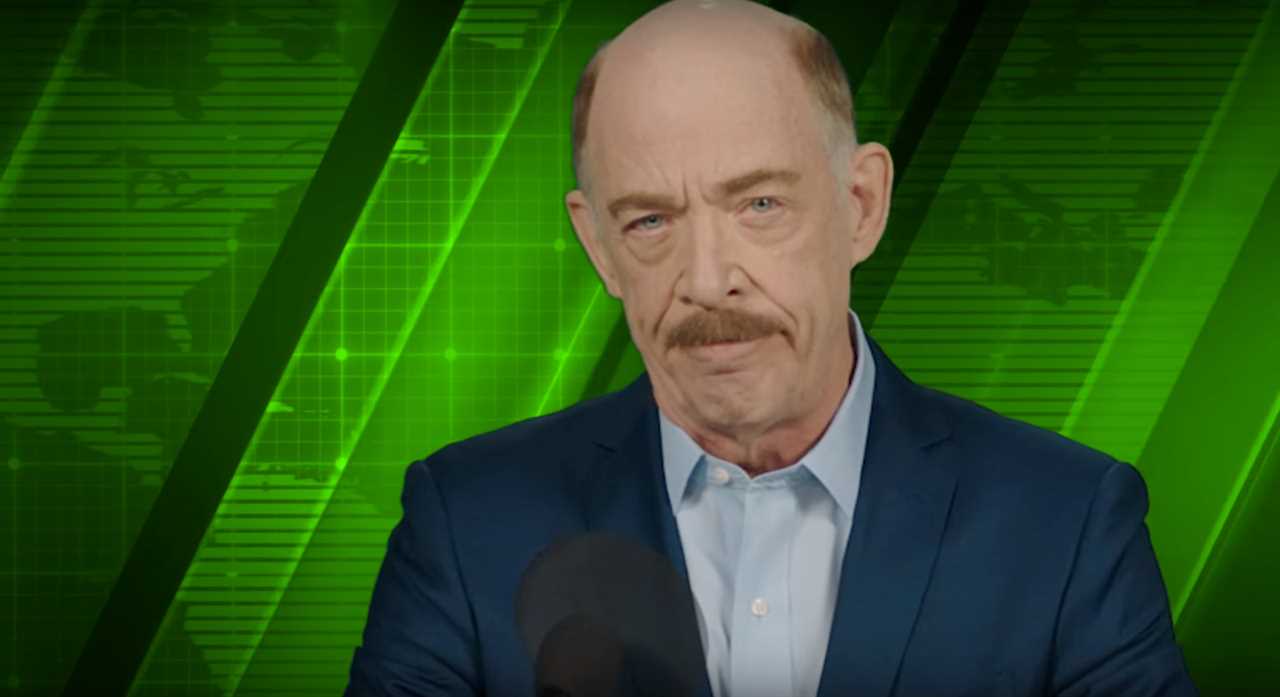
Far from Home is a movie chock-full of reveals, and indeed the biggest is saved for last: Mysterio tells the world Spider-Man’s true identity from beyond the grave. This plot point was hit upon early on by the creative team, and eventually they decided the best person to follow-up on this would be J. Jonah Jameson. Given that J.K. Simmons’ performance as Jameson in Sam Raimi’s trilogy is iconic, the team reached out to the Oscar-winning actor about filling the role once more, albeit with a different Alex Jones-type twist on the character. As Watts explains, Simmons was… confused:
“That was always the plan because we knew that we wanted to reveal Peter’s identity, and we wanted to bring in this idea of the news and not being sure exactly what you can believe or not believe. And it was always going to be him, but we didn’t want to say anything to him or to anyone because we didn’t want any press to leak out about it, via his agents or whatever. So we waited until the very, very last second and called him up, and he came by and he was like, ‘Wait, what? You want me to do what?’ It took him a second to understand, but as we pitched the idea he was totally on board and he really loved getting to be the person who finally outs Peter Parker.”
The moment was shot to be part of the film, but actually appears as the first post-credits scene so the audience can linger with Peter/Spider-Man and MJ a little bit longer. As for that second post-credits scene, well it turns out Nick Fury (Samuel L. Jackson) and Maria Hill (Cobie Smulders) haven’t really been Nick Fury and Maria Hill this entire time. Instead, the movie reveals that they’re the Skrull characters Talos (Ben Mendelsohn) and Soren (Sharon Blynn) while Nick Fury's been on a Skrull ship in space, a plot point that Watts said was inspired by seeing Captain Marvel:
"Once you get into the vocabulary of a con man movie like this, I feel you have more leeway to just keep doing reversals like that," Watts said. "Everyone is lying. Everyone is hiding something. No one is who they seem. It just made sense that at the end of it we would do this. As we were developing the story, there was always a lingering question of, 'But, how could anyone fool Nick Fury? His super power is being skeptical.' But we knew he needed to be fooled in order to make the story work. So as soon as I saw Captain Marvel it became obvious how we do it. When you watch the movie again with this knowledge about the Skrulls there are some fun things you will catch, especially Fury's dialogue.”
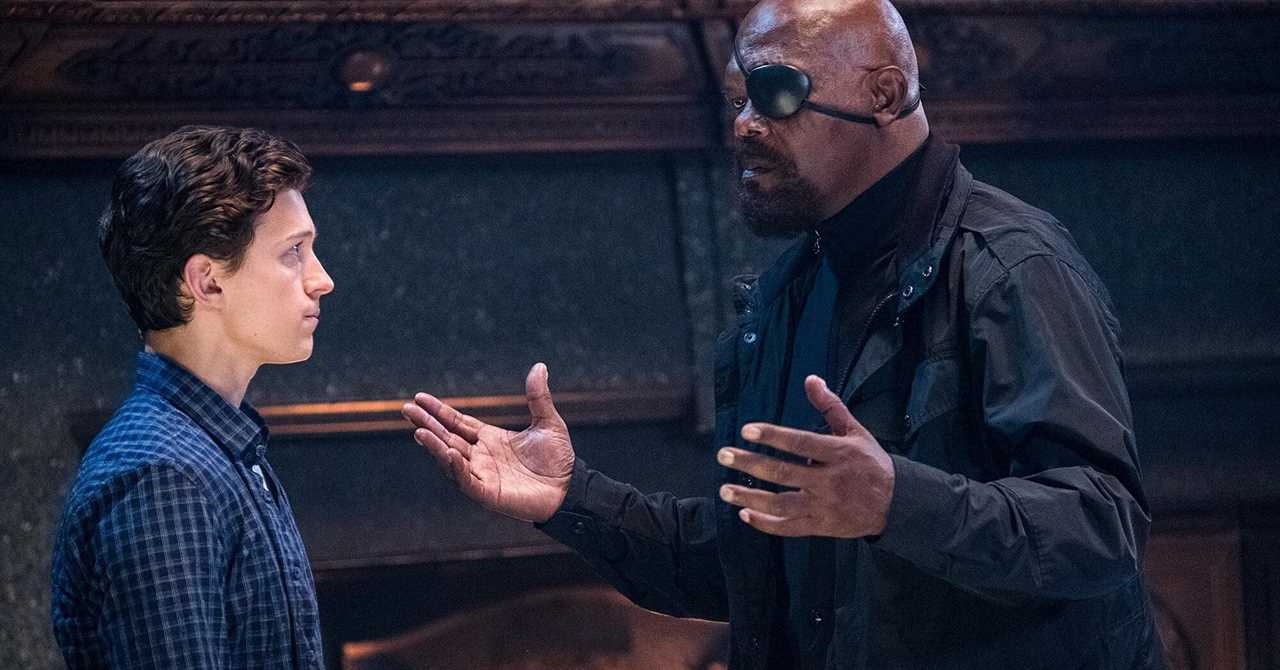
Indeed, throughout the movie Watts hides clues to some of the major reveals. You’ll see Gyllenhaal sitting on the sidelines while his projected version of Mysterio “performs,” and even in the bar scene in which Peter hands over E.D.I.T.H. to Quentin Beck, the art direction is designed to subtly influence Peter’s decision:
"You may not have caught this, but all the things on the wall behind Quentin [in the bar scene] are things that feed into the idea that Peter would hand the glasses over to him," Watts said. "So even the art direction is part of the con. There's military medals, that sort of helps remind Peter what Quentin said about being a hero soldier. There's a picture of glasses, again, embedding that idea. So there are all these things in the background of the bar in Peter's eye line that will subconsciously motivate him to hand these glasses over."
While Spider-Man: Homecoming shot in Atlanta, the production of Far from Home was based in London. Filming began on July 2, 2018, and the major Endgame-related elements were only on a need-to-know basis—most of the actors in the movie besides Holland, Gyllenhaal, and Jon Favreau were unaware that Tony Stark dies in Avengers: Endgame.
The first trailer for Spider-Man: Far from Home was released on January 15, 2019, months before Avengers: Endgame came out. Sony’s workaround to not spoiling the massive Marvel movie was to simply not reveal to audiences at which point in the MCU timeline Far from Home takes place. The trailer and early marketing materials simply showed Peter taking a European vacation, and audiences would either accept that this sequel was actually a prequel, or simply be down for being kept in the dark for a bit. Indeed, after Avengers: Endgame came out, Sony released an additional Far from Home trailer that teased the actual plot—and the reveal that a significant portion of the movie would revolve around Peter Parker reeling from the death of his mentor, Tony Stark.
Spider-Man: Far from Home opened in theaters on July 2, 2019 to a $92.6 million opening weekend, and $185.1 million for the six-day holiday. That was enough to top the $180 million that Spider-Man 2 made over the July 4th holiday back in 2004, and indeed, this Spider-Man sequel went on to gross $1.132 billion worldwide. Not only did Far from Home become the first Spider-Man movie to top $1 billion, it surpassed the gross of Skyfall to become the highest-grossing Sony Pictures film of all time.
However, unbeknownst to the public during this successful release, behind-the-scenes things were getting testy between Sony and Disney. Negotiations got underway between the two studios in late 2018 for an additional Spider-Man movie, but this time, Disney wanted a much bigger piece of the pie. For Homecoming and Far from Home, Disney/Marvel was paid a nominal fee for producing the films and received 5% of the box office, while Sony Pictures paid for the entire production of the movies and took the rest of the box office. For a third Spider-Man movie, Disney proposed splitting production costs and box office profits 50/50, but Sony balked. In January 2019, a more modest 25-25 deal was put on the table, but Sony reportedly didn’t counter for at least six months. So in June 2019, a month before Far from Home’s release, Disney co-chair Alan Horn walked away from the negotiating table.
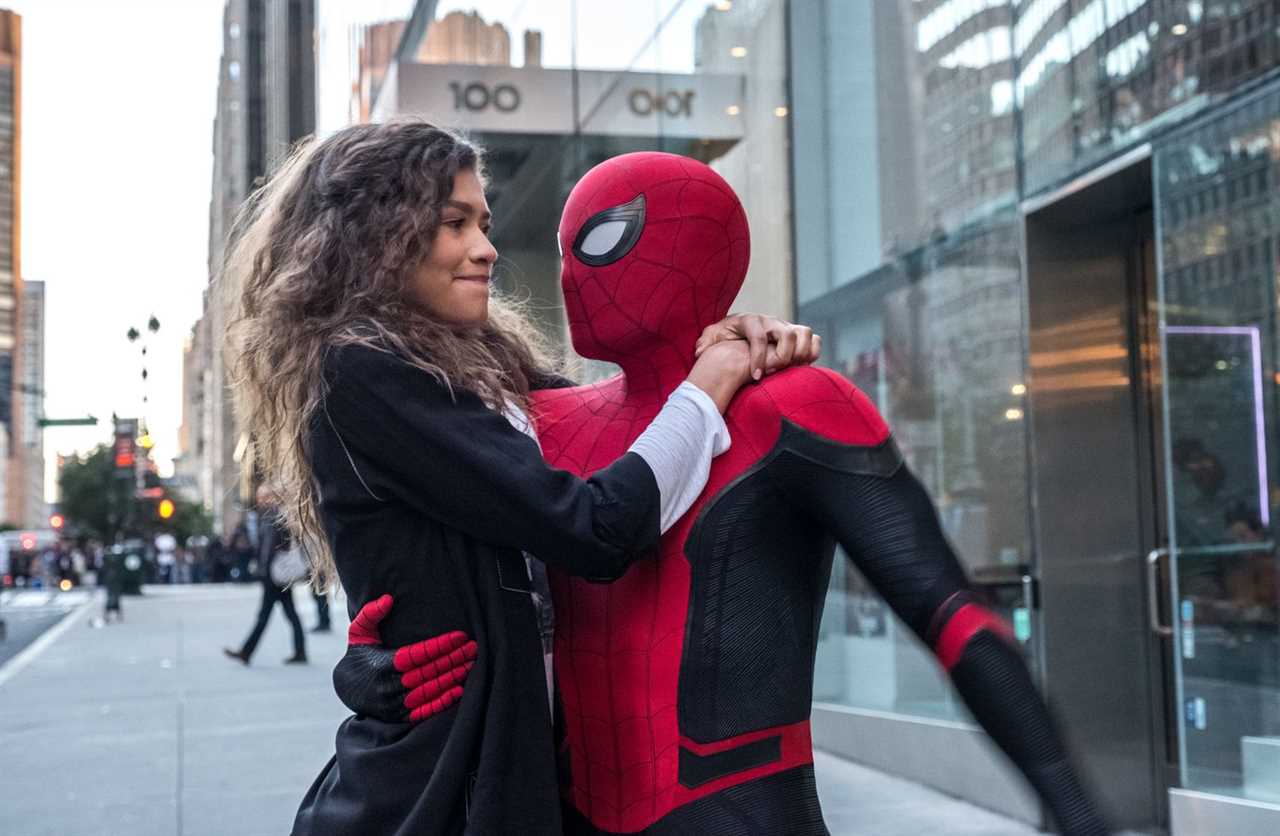
News broke in August 2019 that Disney and Sony were parting ways, and Tom Holland’s Peter Parker would no longer be part of the MCU. The fans, understandably, cried foul. Sony no doubt felt bullish about tackling another Spider-Man movie solo, and with Venom 2 in the works, would likely be bringing Holland into the fold of its other Marvel adaptations (which are not produced by Marvel Studios). But behind the scenes, Holland himself got involved. He reached out to Sony chief Tom Rothman, even using his starring turn in Sony’s upcoming Uncharted movie as leverage to get him back to the negotiating table. Then Holland asked for Disney CEO Bob Iger’s personal email, and pleaded with the Disney head to reconsider, stressing the fan outcry.
As a result of Holland’s efforts, both Iger and Rothman returned to the negotiating table and worked out a deal for one more Spider-Man movie, for which Disney will take a 25% stake, as well as a Peter Parker appearance in one upcoming MCU movie. All’s well that ends well, eh?
The success of Far from Home is monumental in the history of Spider-Man onscreen, and it’s a testament both to the storytelling capabilities of those involved and Holland’s innate charm as Peter Parker. The guy clearly loves playing this character, and as evidenced by his efforts to get Disney and Sony back together, genuinely cares about the quality of the films. What the future holds for Spider-Man we know not, but Far from Home moved the character to exciting, emotional places that built upon what came before but also set up a new frontier ahead. The future of the Spider-Man franchise looks bright, and for the time being, that means a future inside the MCU.
If you missed any of my previous How the MCU Was Made entries, click on the links below.
- Iron Man
- The Incredible Hulk
- Iron Man 2
- Thor
- Captain America: The First Avenger
- Marvel’s The Avengers
- Iron Man 3
- Thor: The Dark World
- Captain America; The Winter Soldier
- Guardians of the Galaxy
- Avengers: Age of Ultron
- Ant-Man
- Captain America: Civil War
- Doctor Strange
- Guardians of the Galaxy Vol. 2
- Spider-Man: Homecoming
- Thor: Ragnarok
- Black Panther
- Avengers: Infinity War
- Ant-Man and the Wasp
- Captain Marvel
- Avengers: Endgame
-----------------------
By: Adam Chitwood
Title: How Spider-Man: Far from Home Was Made: Crafting Those Big Twists
Sourced From: collider.com/spider-man-far-from-home-plot-twists-explained/
Published Date: Mon, 19 Jul 2021 14:06:43 GMT
Did you miss our previous article...
https://ballerawards.news/movies/watch-daryl-returns-in-creepy-walking-dead-season-11-clip



